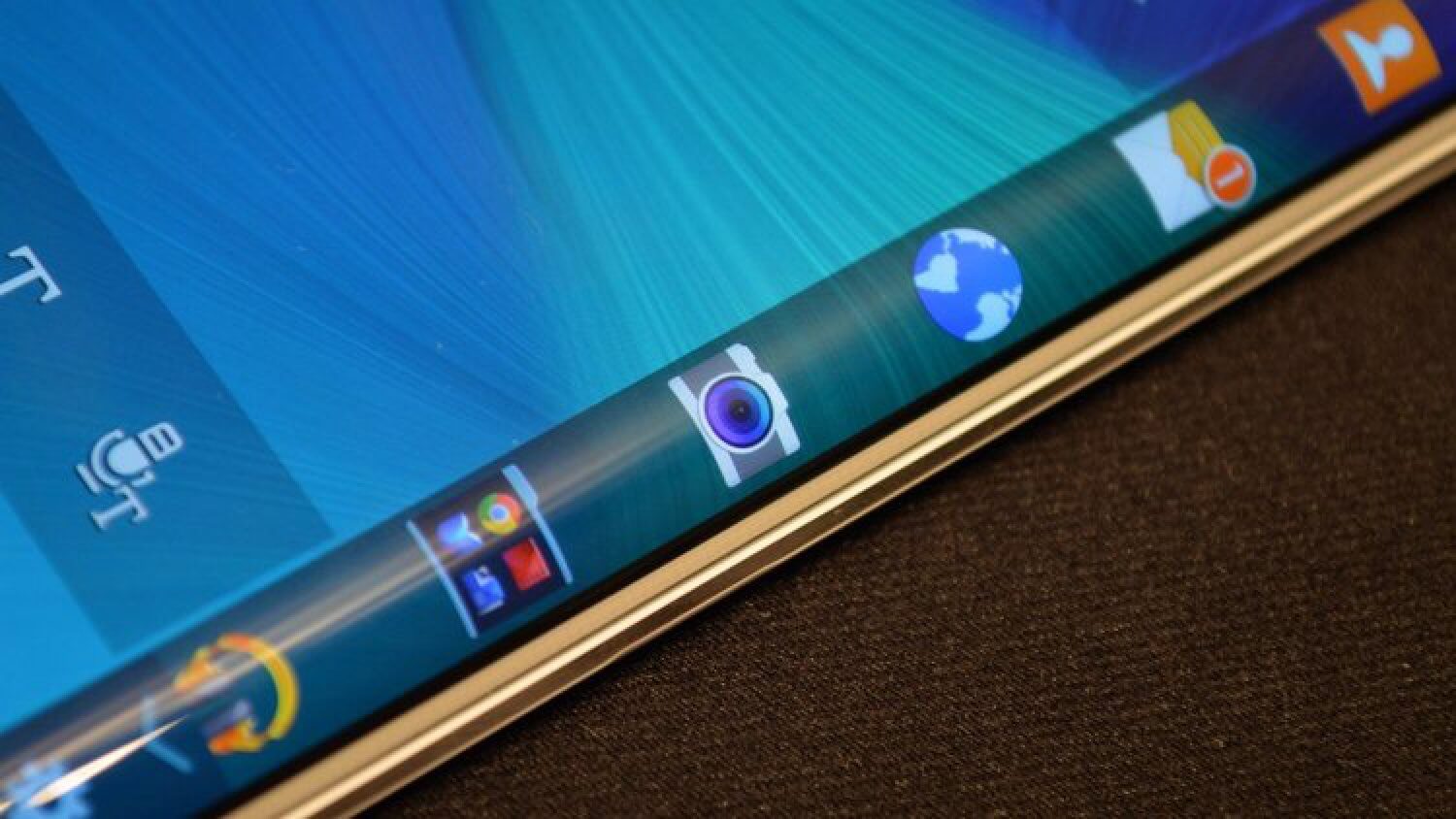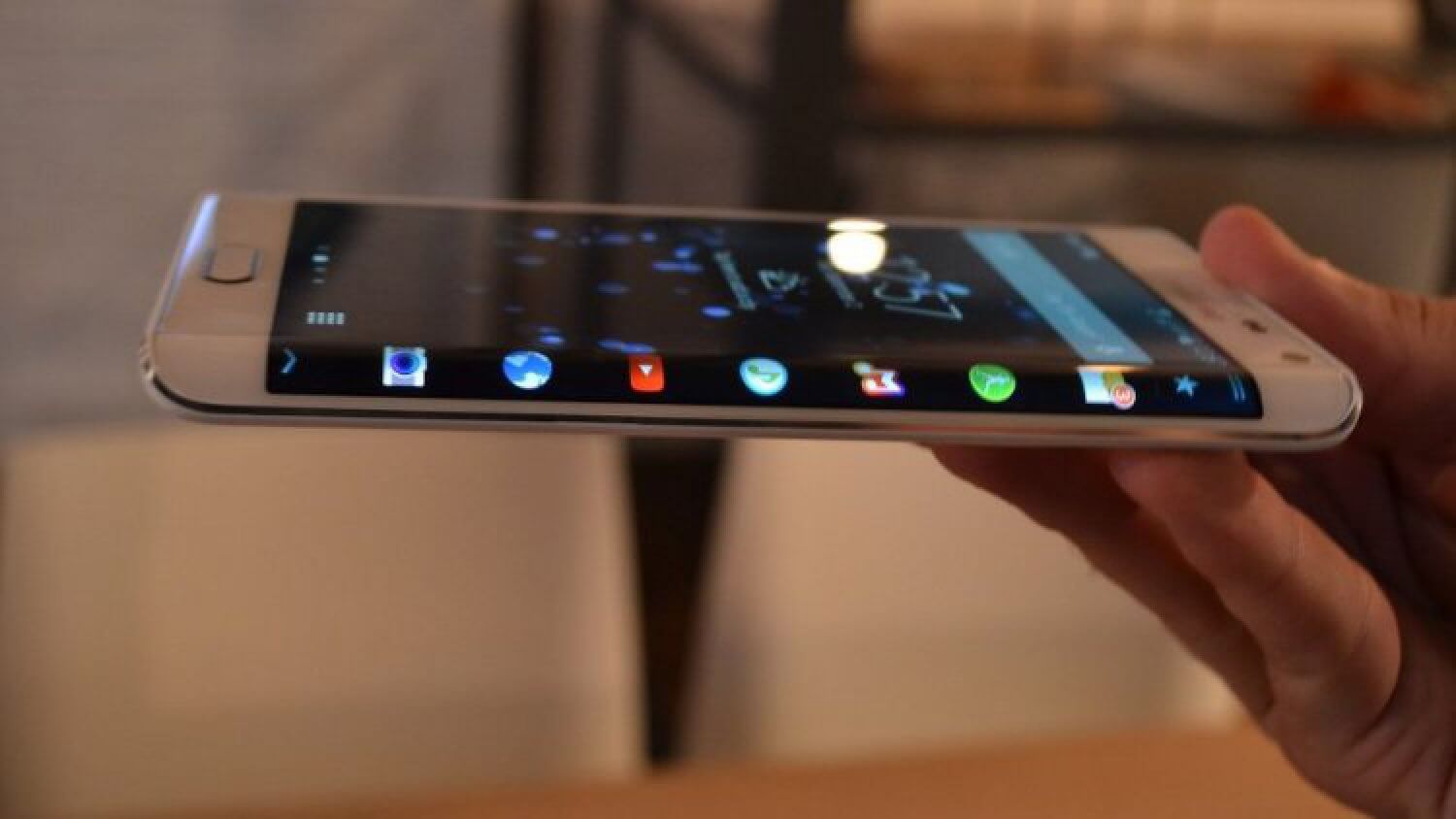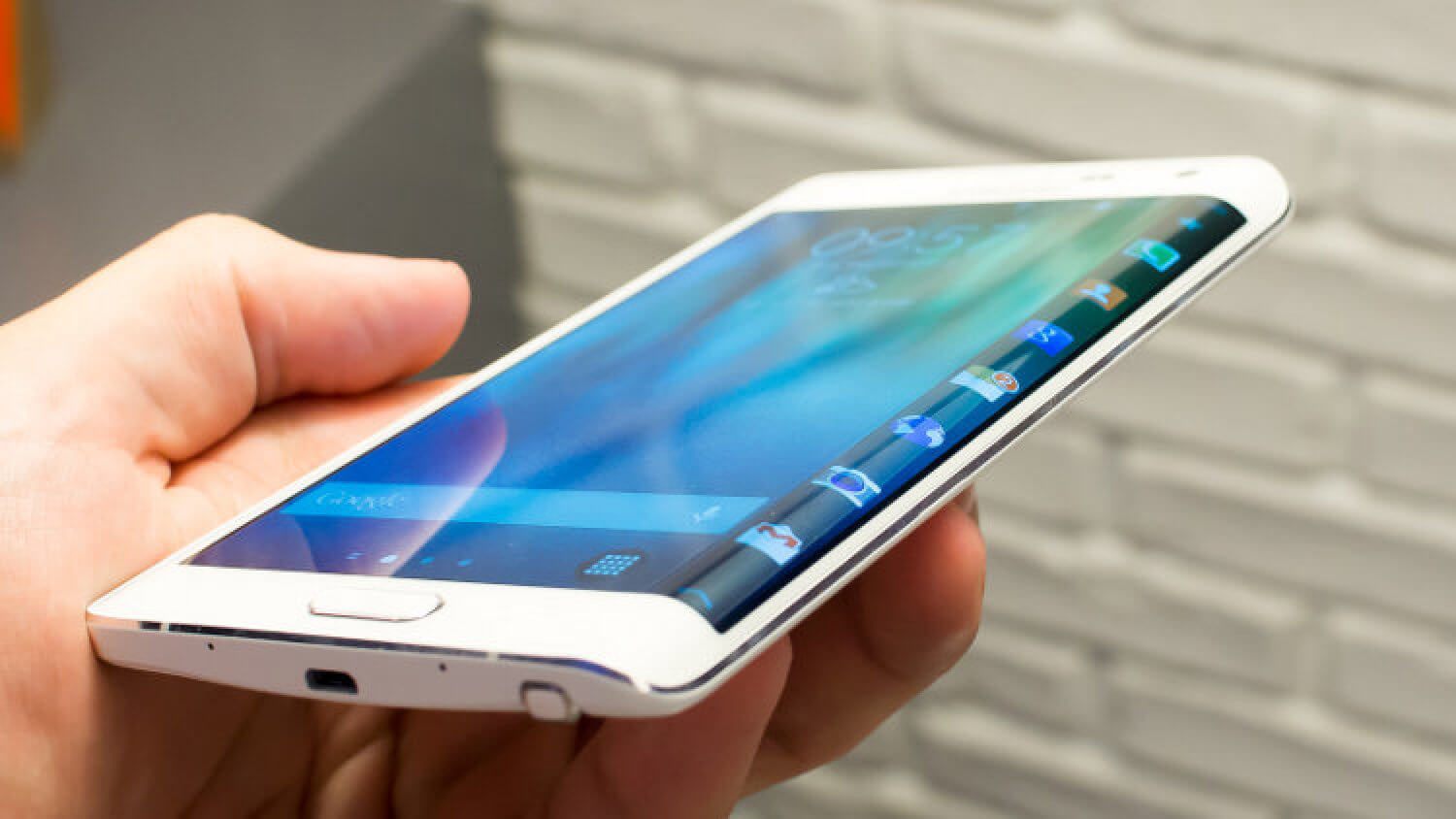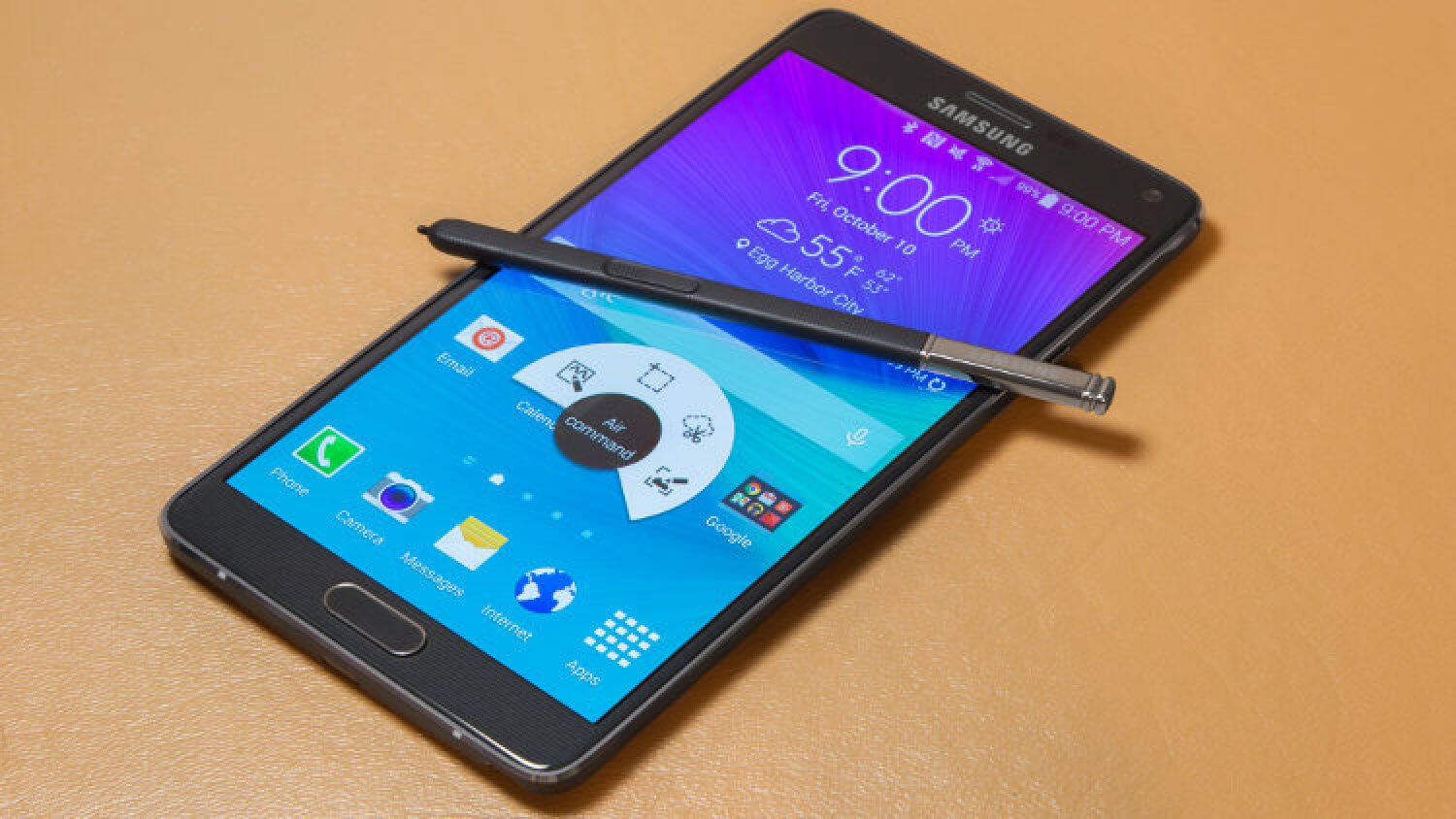
In recent years has become a tradition for Samsung to release their flagship phone in two versions. On the basis of its Exynos processor and chip-based products which often acts as Qualcomm. Top Phablet Samsung Galaxy Note 4 is no exception to this rule. Some have a quad-core mobile Qualcomm Snapdragon 805, while others are equipped with chipset Exynos 7. What does this mean for users?
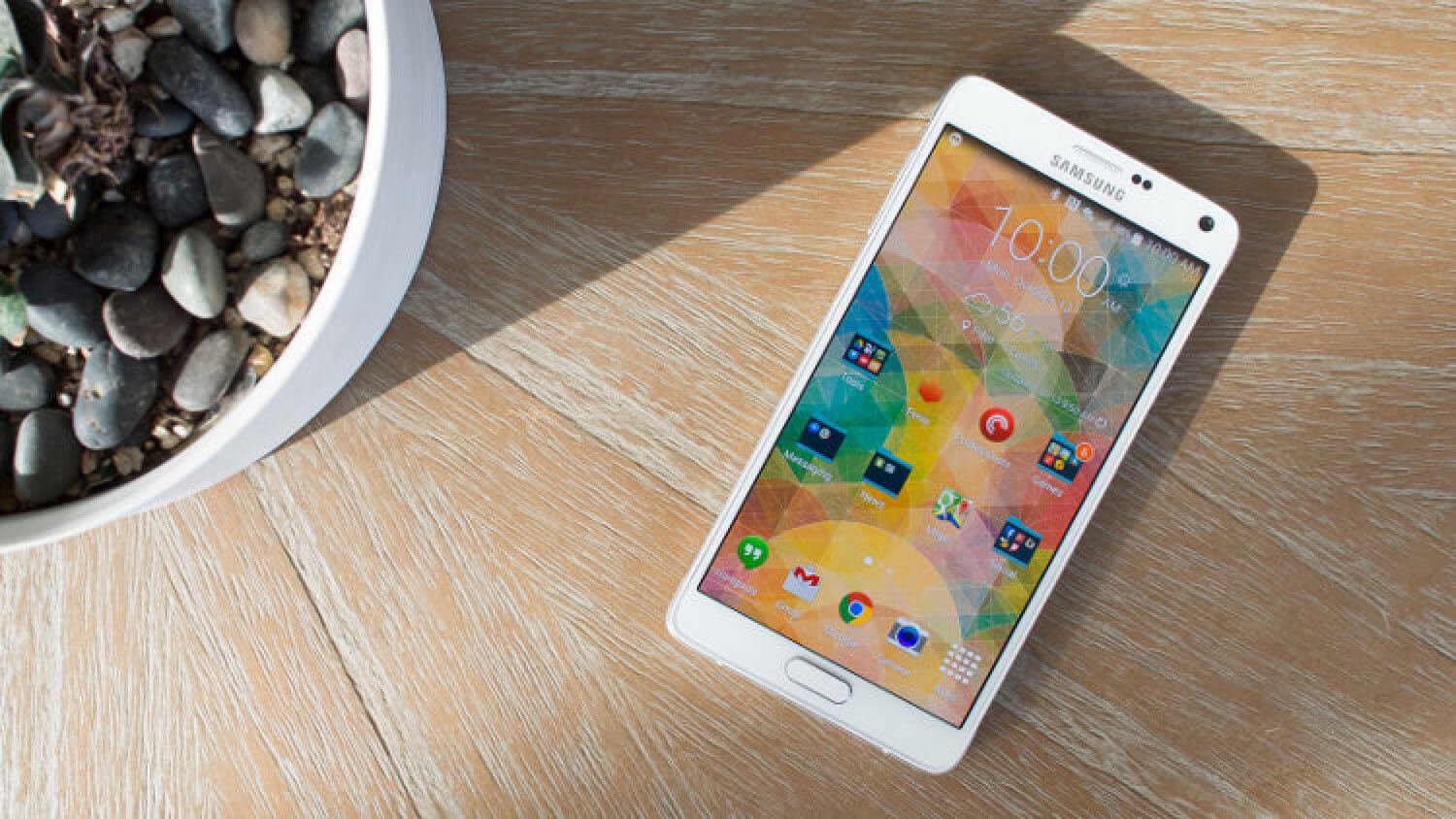
In this issue to try to understand columnist Phone Arena Nick Tee who posted on the pages of this resource results of testing different versions of the two benchmarks Galaxy Note 4 Snapdragon processor and Exynos. He notes that US operators offer cell phones based on Snapdragon, while model-based Exynos is mainly represented in some markets in Europe, Asia and Latin America. About Galaxy Note 4 A number of interesting facts. But the fact that the phone is introduced to the market two varieties with different processors know relatively little, as well as the differences that are caused by one or another processor.
In theory, the difference between these chips are enormous. Snapdragon 805 has only four cores, while 7 Exynos Octa has a total of eight cores. More specifically, the two quad-core clusters with varying frequency. All processor core of the chip can operate simultaneously, if necessary. On the other hand, a Qualcomm processor running at a higher clock rate reaching 2.7 gigahertz. Meanwhile faster core Exynos – 1,9-GHz and slower clock speed can boast only 1.3 GHz.
But this is only the “tip of the iceberg of the silicon.” Different chipsets and graphics processors. In Snapdragon 805 – Adreno 420, and at 7 Exynos Octa – Mali-T760. Fortunately, both great support QHD-displays, while possessing support OpenGL ES 3.1 and Direct3D 11.1. But the differences in the architecture of GPUs is that they work in different ways.
Smartphones based on two different processors tested benchmarks to determine the chip with the highest performance.
During testing eight were used benchmark tools with which has been tested by mononuclear and polynuclear performance Snapdragon 805 and 7 Exynos Octa, their ability to handle the 2D- and 3D-graphics, as well as the speed of the RAM, storage, and web surfing. Before testing both phones were returned to the factory settings.
Processor
It should be noted immediately that these processors to choose the best is very difficult, but, as shown by a series of tests, Exynos has some superiority . However, the results of benchmark AnTuTu Qualcomm processor has received more points in most single and multi-core tests. And the results of benchmark tests Vellamo, Geekbench, Basemark and PC Mark show that single- and multi-core performance is higher at 7 Exynos Octa.
Graphics
In this regard, particularly in the lead Snapdragon 805. During testing, he walked around the Exynos chip on all benchmark tests, which include the AnTuTu (testing 2D- and 3D-graphics), graphics benchmark Basemark, 3D Mark Ice Storm Unlimited and GFX Bench.
RAM and Drive
The speed of a RAM during testing was higher in version Samsung Galaxy Note 4 based on 7 Exynos Octa. As for the operation of the drive, there is both devaysa proved themselves practically the same.
Web benchmark
The results were contradictory. Benchmarks Vellamo and AnTuTu HTML5 version of the phone above estimate based Exynos. And SunSpider tests Basemark and say that the speed of the native browser more impressive in Note 4 Snapdragon 805.
Smartphone makers sometimes integrated into their phones option forces the processor to run at maximum speed while running the benchmark application notes Nick Tee. But in the case of the Galaxy Note 4 this was not observed – the clock speed during the test dynamically changed, as in the normal operation of the device.
What version of Galaxy Note 4 powerful?
Both chips adequate performance, and each of them has a certain superiority in the performance of certain tasks. Version of the phone-based Exynos Octa 7 shows the best results of processing power and speed of RAM that the user is accelerating the implementation and application download. On the other hand, the model based on the Snapdragon chip 805 is leading the results of graphics benchmark tests, which means that it is more suitable for gaming. However, both versions of the Galaxy Note 4 are large and powerful Android-device, the differences between them are minimal.
benchmark results (in points)
AnTuTu 5.3:
Benchmark AnTuTu
Galaxy Note 4 based on Snapdragon 805 – 46910 ;
Galaxy Note 4 based on 7 Exynos Octa – 48430.
32-bit test processor (single-core )
Galaxy Note 4 based on Snapdragon 805 – 7746;
Galaxy Note 4 based on 7 Exynos Octa – 6749.
32-bit test processor (multi-core)
Galaxy Note 4 based on Snapdragon 805 – 26451;
Galaxy Note 4 based on 7 Exynos Octa – 22924.
Benchmark HTML 5
Galaxy Note 4 based on Snapdragon 805 – 9324 ;
Galaxy Note 4 based on 7 Exynos Octa – 11284.
Integer operations of the CPU (CPU) (single-core test)
Galaxy Note 4 based on Snapdragon 805 – 2238;
Galaxy Note 4 based on 7 Exynos Octa – in 1873.
Operations CPU (CPU) floating-point (single-core test)
Galaxy Note 4 based on Snapdragon 805 – 2710;
Galaxy Note 4 based Exynos Octa 7 – in 2209.
Integer operations of the CPU (CPU) (multi-core test)
Galaxy Note 4 based on Snapdragon 805 – 3079;
Galaxy Note 4 based on 7 Exynos Octa – 4089.
Operations CPU (CPU) floating-point (multi-core test)
Galaxy Note 4 based on Snapdragon 805 – 3770;
Galaxy Note 4 based on 7 Exynos Octa – 4947.
Operations RAM
Galaxy Note 4 based on Snapdragon 805 – 1950;
Galaxy Note 4 based on 7 Exynos Octa – 3291.
Speed RAM
Galaxy Note 4 based on Snapdragon 805 – 2014;
Galaxy Note 4 based on 7 Exynos Octa – 3247.
Input and output drive
Galaxy Note 4 based on Snapdragon 805 – 2561;
Galaxy Note 4 based on 7 Exynos Octa – in 2566.
Input and output database
Galaxy Note 4 based on Snapdragon 805 – 683;
Galaxy Note 4 based on 7 Exynos Octa – 658.
UX multitasking
Galaxy Note 4 based on Snapdragon 805 – 7331;
Galaxy Note 4 based on 7 Exynos Octa – 6645.
UX Runtime
Galaxy Note 4 based on Snapdragon 805 – 2460;
Galaxy Note 4 based on 7 Exynos Octa – in 1999.
2D-graphics (GPU)
Galaxy Note 4 based on Snapdragon 805 – 1664;
Galaxy Note 4 based on 7 Exynos Octa – 1620.
3D-graphics (GPU)
Galaxy Note 4 based on Snapdragon 805 – 16469;
Galaxy Note 4 based on 7 Exynos Octa – 15287.
Basemark OS II 1.0.10:
General
Galaxy Note 4 based on Snapdragon 805 – 1315;
Galaxy Note 4 based on 7 Exynos Octa – in 1238.
System
Galaxy Note 4 based on Snapdragon 805 – 1687;
Galaxy Note 4 based on 7 Exynos Octa – in 1917.
memory
Galaxy Note 4 on the basis of Snapdragon 805 – 658;
Galaxy Note 4 based on 7 Exynos Octa – 871.
Graphics
Galaxy Note 4 based on Snapdragon 805 – 3390;
Galaxy Note 4 based on 7 Exynos Octa – in 1981.
Web
Galaxy Note 4 based on Snapdragon 805 – 793;
Galaxy Note 4 based on 7 Exynos Octa – 712 .
Vellamo 3.1:
Testing Samsung Browser
Galaxy Note 4 based on Snapdragon 805 – 3346;
Galaxy Note 4 based on 7 Exynos Octa – 4018.
Testing browser Chrome
Galaxy Note 4 based on Snapdragon 805 – 3278;
Galaxy Note 4 based on 7 Exynos Octa – 3421.
Multi-core performance
Galaxy Note 4 based on Snapdragon 805 – 1811;
Galaxy Note 4 based Exynos Octa 7 – in 2094.
Metal
Galaxy Note 4 based on Snapdragon 805 – 1840;
Galaxy Note 4 based on 7 Exynos Octa – in 1940.
Geekbench 3.2.5:
single core test
Galaxy Note 4 based on Snapdragon 805 – 1122;
Galaxy Note 4 based on 7 Exynos Octa – in 1242.
Multicore test
Galaxy Note 4 based on Snapdragon 805 – 3323;
Galaxy Note 4 based on 7 Exynos Octa – 4089.
PC Mark 1.2:
Job
Galaxy Note 4 based on Snapdragon 805 – 4019;
Galaxy Note 4 based on 7 Exynos Octa – 4614.
3D Mark 1.3 – Ice Storm Unlimited:
points
Galaxy Note 4 based on Snapdragon 805 – 20513;
Galaxy Note 4 based on 7 Exynos Octa – 19891.
Graphics
Galaxy Note 4 based on Snapdragon 805 – 21001;
Galaxy Note 4 based on 7 Exynos Octa – 20651.
The physical test
Galaxy Note 4 based on Snapdragon 805 – 18979
Galaxy Note 4 based on 7 Exynos Octa – 17625.
GFX Bench 3.0:
Manhattan
Galaxy Note 4 based on Snapdragon 805 – 683 / 11.0 fps;
Galaxy Note 4 based on 7 Exynos Octa – 659 / 10.6 fps.
Manhattan Offscreen 1080p
Galaxy Note 4 based on Snapdragon 805 – 1027 / 18,5 fps;
Galaxy Note 4 based on 7 Exynos Octa – 1021 / 16,5 fps.
T-Rex
Galaxy Note 4 based on Snapdragon 805 – 1481 / 26,4 fps;
Galaxy Note 4 based Exynos 7 Octa – 1372 / 24,5 fps.
T-Rex Offscreen 1080p
Galaxy Note 4 based on Snapdragon 805 – 2356 / 42,1 fps;
Galaxy Note 4 based on 7 Exynos Octa – 1880 / 33,6 fps.
SunSpider 1.0.2:
Samsung Browser
Galaxy Note 4 based on Snapdragon 805 – 372 ms;
Galaxy Note 4 based Exynos 7 Octa – 396,3 ms.
Browser Chrome
Galaxy Note 4 based on Snapdragon 805 – 1165,6 ms;
Galaxy Note 4 based on 7 Exynos Octa – 966,4 ms.
The processor is one of the main components of a smartphone. What processor do you prefer, an eight samsungovsky Exynos Octa 7 or Snapdragon 805 with a higher clock speed, but “only” a quad? Whether there is any value, which of these chips is based smartphone?
